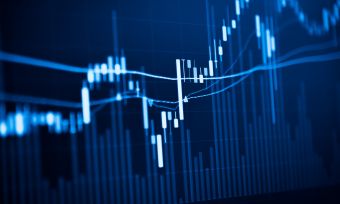Exchange-traded-funds or ETFs take the benefit of mutual fund investing to the next level. Not only do they generally possess better liquidity than a mutual fund, but present a wide variety of opportunities for a more flexible trading experience.
Specifically, in the US market there are over 2,000 different types of ETFs that model a variety of market trends and sectors. Stake, US commission-free brokerage platform, offers a diverse range of US ETFs, with some of the common types you can expect on their platform below.
Index Tracking
As we covered in Chapter Two, the most common form of ETF, tickers like SPX and QQQ simply track a basket of stocks; namely the S&P500 and Nasdaq respectively.
How does it work? In the case of index ETFs, the ETF issuer will hold a stake in all the companies that make up an index. The size of the stake is in line with the official index weighting of each stock. For instance, Amazon accounts for 4.9% of the S&P500’s weighting.
When you buy into an ETF, you are entitled to a portion of all these holdings wrapped into one product. Such ETFs are typically passively managed; fund managers do not actively trade stocks in an effort to produce excess gains (alpha), rather they only exchange positions in an effort to adhere to the index weightings; a process known as rebalancing (each index has different weighting rules to decide how much of each stock to hold; some are market cap weighted, others like the Dow Jones are price weighted)
It is easy to see why such products are so popular; with relatively low fees, index ETFs provide an easy way to track the market.
Indices can be more nuanced than simply whacking together a basket of the biggest stocks. And with a greater range of indices come more investment options.
Thematic/Sector based
Within each index are sub-groups of stocks split up by their line of business. In fact, there are exactly 158 sub industries a stock can fit into but more broadly, each stemming from one of eleven over-arching sectors. See them all here, as classified by the official Global Industry Classification Standard (GICS).
Just like index ETFs manage all stocks belonging to an index, sector ETFs stick to specific sectors. $XSD is an S&P semiconductor ETF holding names Nvidia and AMD.
In some instances, stocks may not belong to a specific sub industry but adhere to a theme. Sustainability and marijuana are both themes that have enjoyed a run in the last couple of years. Again, ETFs exist to tackle such themes. Appropriately named $GAMR is a video game ETF.
The beauty of thematic ETFs is they do not adhere to some of the stricter criteria of sector or index ETFs. As such, ETF managers can hold foreign stocks, penny stocks and even private companies on their books, breaking down the barriers to access for retail traders.
Exotic
Usually reserved for experienced traders, and sometimes for the day traders on r/WallStreetBets, exotic ETFs provide leveraged exposure to indices or themes or access to assets outside equities. One example includes UVXY, a 1.5x leveraged volatility tracking fund.
What does leverage mean? Quite simply, the ETF moves at a multiple to its underlying asset movement. Leverage usually ranges between 1.5x and 3x. While you benefit greatly in a bull run, traders also face increased losses if the instrument decreases in price.
You may have noticed the “inverse” ETF used an example above. Some products also move inversely to the underlying asset. Let’s look at SPXL which is a 3x inverse S&P ETF, for every 1% the S&P drops, SPXU gains 3%. There are ways to make money when markets turn red! That’s the beauty of ETFs; they give retail traders exposure to more complex, exclusive financial derivatives.
How is this even possible? While index and sector ETFs hold equities as the underlying asset, exotic products are usually backed by derivatives like futures.
Find out more about the Ethical ETFs in the next chapter.
Head back to the Ultimate Guide to ETFs
The table below displays some of the International Broad Based ETFs available on our database with the highest three-year returns (sorted highest to lowest by three-year returns and then alphabetically by provider name). Use Canstar’s ETF comparison selector to view a wider range of products. Canstar may earn a fee for referrals.
 About Matt Leibowitz
About Matt Leibowitz
Matt launched Stake after returning to Australia from the US, and finding it difficult to continue trading US shares. Having run global trading teams in the most sophisticated financial markets using the most advanced technologies, Matt set out to open up the world’s biggest markets to the rest of the globe with an online commission-free brokerage platform.
This article was reviewed by our Content Producer Isabella Shoard before it was published as part of our fact-checking process.
This content was reviewed by Content Producer Isabella Shoard as part of our fact-checking process.







Share this article